Looking for an easy guide to sugar glider care for new owners?
Below, we’ll go over all of the basics that go into caring for one of these neat marsupials!
One word of advice, though- make sure sugar gliders are legal in your state before adopting one!
We’ll assume you already did that, so let’s just dive right into those care tips, shall we?
You may also like: Sugar Glider Breed & Colors
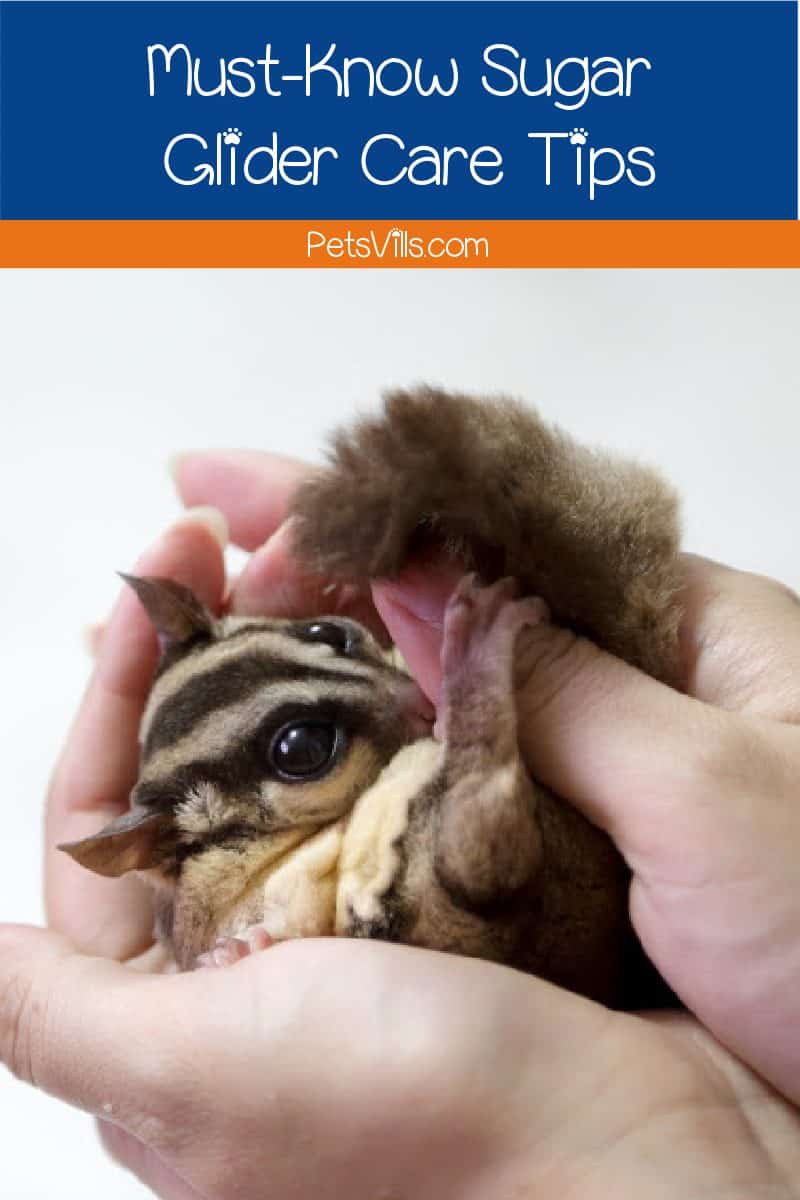
Guide to Sugar Glider Care for New Owners: All the Basics You Need to Know
We skimmed over quite a few basics when we talked all about sugar glider facts, but now it’s time to get more in-depth into their care.
Are sugar gliders good pets? If you are considering a sugar glider as your new pet, here are some things you need to know.
FYI, this post contains affiliate links. If you make a purchase through these links, we earn a small commission at no extra charge to you.
ALSO READ: Are Sugar Gliders Dangerous?
Naming Your Sugar Glider
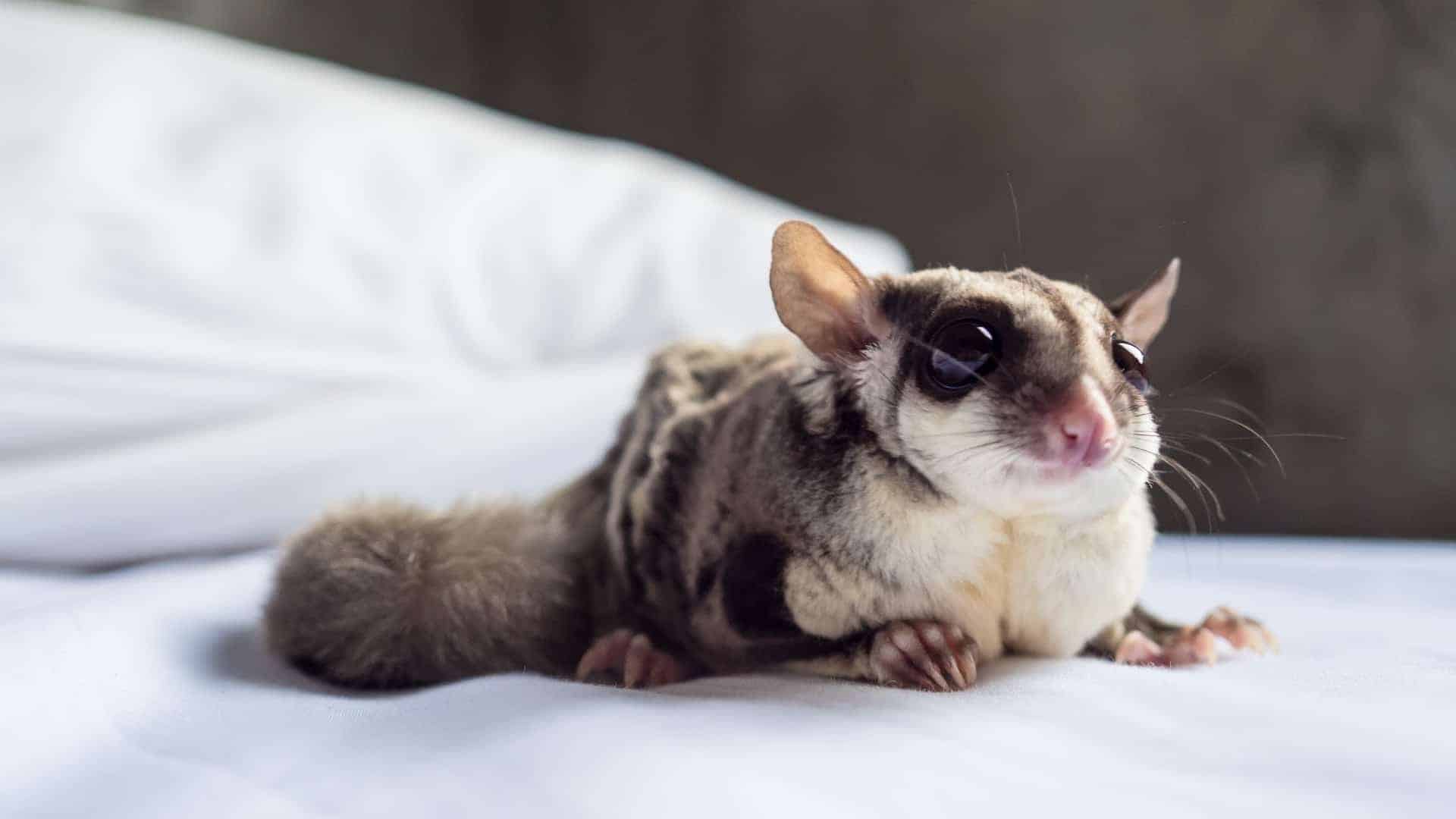
This is the very first thing you should do, and for more reasons than the obvious!
Sugar gliders are very smart critters
Once you name your sugar glider, you can easily train them to learn their name and respond when you call their name.
Need some help coming up with ideas? Check out these 100 Super Cute Sugar Glider Names!
Sugar Glider Lifespan
Sugar gliders live rather long lives and are designed to be long-term pets.
The lifespan of sugar gliders in captivity highly depends on how they are cared for.
However, in general, sugar gliders live about 4-5 years in the wild and 10-15 years in captivity. Yes, 15 years!
Best Diets for Sugar Gliders
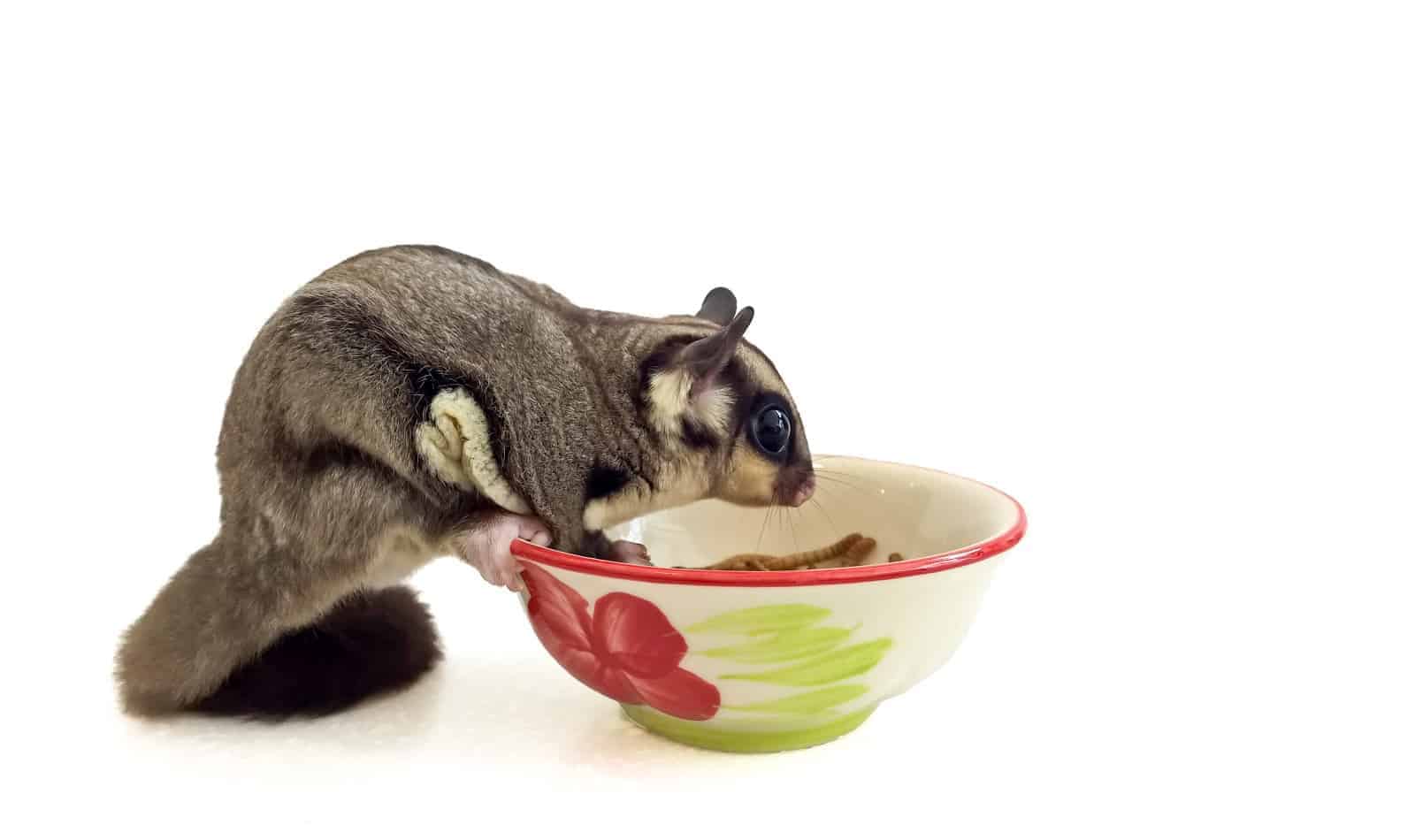
In the wild, sugar gliders feed on forest sweets like flower nectar, the gum, and sap of acacia and eucalyptus trees, as well as a wide variety of insects, spiders, lizards, small birds, and bird eggs.
Sugar gliders are omnivores, meaning they eat and survive on both animal and plant matter.
As a general rule of thumb:
- 50% of a sugar glider’s diet should come from a protein source (cooked chicken, cottage cheese, hard-boiled eggs, yogurt, tofu, and insects like crickets and mealworms)
- 35% should come from fresh fruits and vegetables
- 15% should come from a staple diet
So, what are a few of the recommended staple diets?
- Bourbon’s Modified Leadbetter’s Diet (BML) is a well-known, nutritionally complete diet.
- The Original High Protein Wombaroo Diet (OHPW) is a vitamin-enriched diet with a soft, pudding-like texture.
- The Pet Glider Exotic Diet (TPG) was developed by Priscilla Price, a leading figure in the sugar glider community.
We shared some most nutritious sugar glider food recipes for each one, so check that out.
So, What Foods are Safe for Your Sugar Glider and Which Ones are Harmful?
Here are 2 resources that may help with some answers.
The Pet Glider has an extensive list of Safe Fruits and Vegetables You Can Feed Sugar Gliders.
Some of the most common items found in most grocery stores include:
- Apples
- Avocados
- Bok Choy
- Dates
- Lettuce *
- Peas
- Pumpkin
- Strawberries
- Zucchini
*A word about lettuce- skip the iceberg version. It really has little to no nutritional value compared to other lettuces.
On the other side of the question, Exotic Nutrition features a list of unsafe foods. Among them:
- Onion
- Garlic
- Chocolate
- Fruit pits
- Apple seeds
Their list also includes some foods that aren’t technically unsafe, but just aren’t the most nutritional options.
You may also like: CARAMEL SUGAR GLIDERS
Sugar Glider Health Care Tips
While sugar gliders don’t need any vaccinations, you should take your sugar glider to have a yearly wellness exam
According to the Merck Veterinary Manual, a comprehensive reference manual dedicated to animal health care, sugar gliders are susceptible to a number of diseases and disorders.
These include:
- aflatoxicosis
- constipation
- diarrhea
- eye disorders
- lumpy jaw
- mineral, protein, and vitamin imbalances
- mites and fleas
- obesity
- toxoplasmosis
- tumors
So, finding a vet well-versed in these sweet marsupials is a vital part of sugar glider care.
Finding the Right Vet with Sugar Glider Care Experience
You’ll need to find a veterinarian soon after you bring your new friend home.
That way you’re prepared in the event they need emergency care down the road.
Because sugar gliders are considered exotic animals, you’ll need to search for an exotic animal veterinarian, since they specialize in the medical treatment of exotic amphibians, birds, mammals, and reptiles.
A great resource for locating one of these specialized vets is through the Association of Exotic Mammal Veterinarians (AEMV).
The AEMV is an organization of veterinary professionals dedicated to advancing the care of exotic companion mammals.
Housing Needs
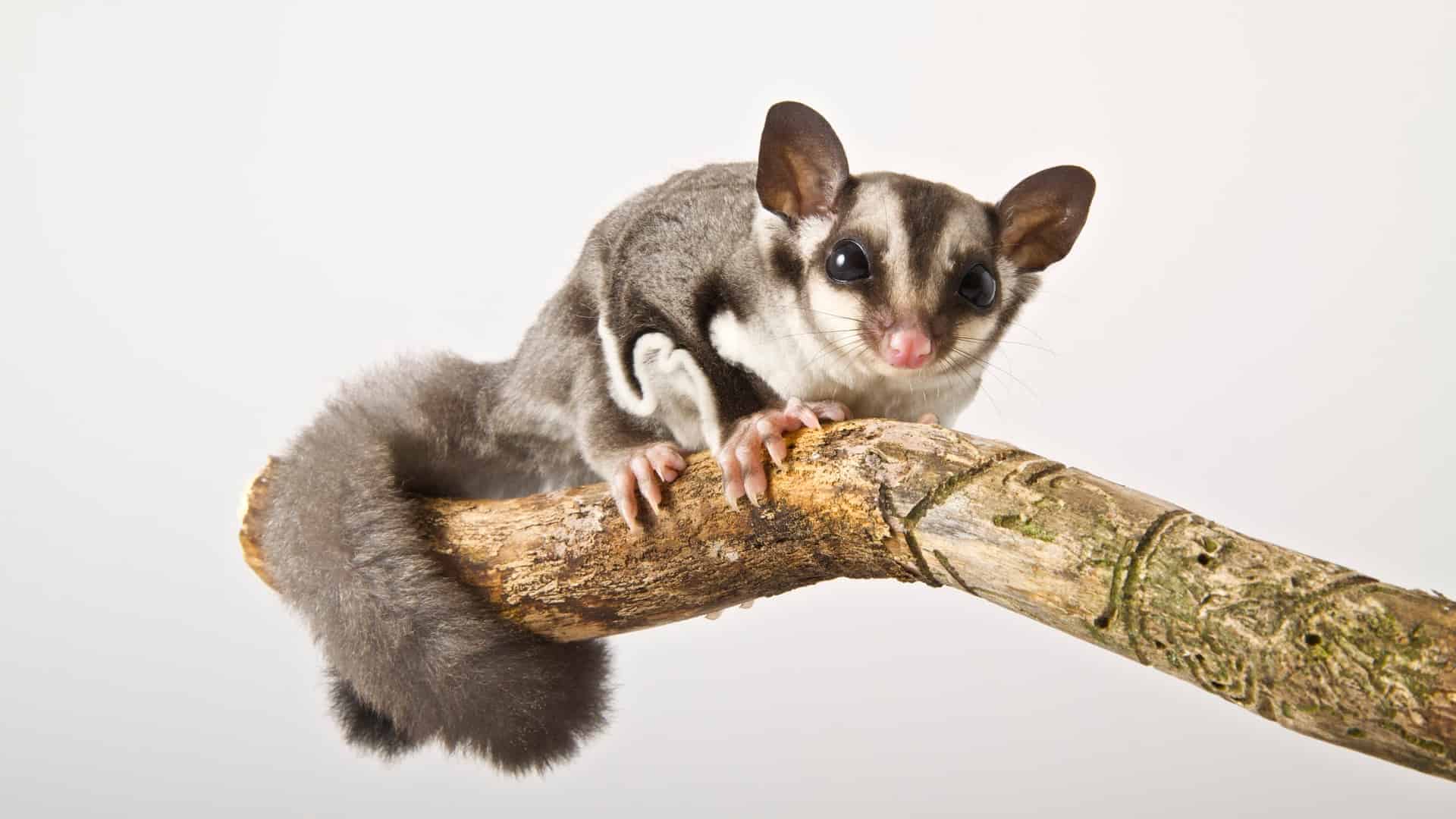
Sugar gliders need a lot of room, as that is what they naturally have in the wild
The MINIMUM cage dimensions should be 3-feet high, 2-feet wide, and 2-feet long.
To ensure your sugar glider doesn’t pull a Houdini, be sure the space between the wires is no wider than ½ an inch.
There are a few essential items that your buddy will need inside their cozy abode, including bedding, a place to sleep, a food dish and water bottle, an exercise wheel, and some toys.
Bedding is placed either on the bottom of the cage or in the tray pan for waste collection.
You can use newspaper, reusable puppy pads, or purchase a commercial brand product.
ALSO READ: How Do Sugar Gliders Drink Water?
Include Hidden Spots
Sugar gliders love to sleep in hidden spots that are high up in their cage.
This is because, in the wild, they sleep up in trees.
You can opt for something like this cozy, fleece Tie-Dye Sleeping Pouch for Sugar Gliders or this cool Critter Space Pod.
A wheel is an essential item for the cage because sugar gliders are highly active and they need a lot of stimulation, a role that exercise wheels fill very well.
Like the wheels, sugar gliders need toys to play with because they need stimulation, so they don’t become bored.
They love toys that are soft, that make noise, that they can carry to their sleeping area, and that they can chew on.
Social Needs
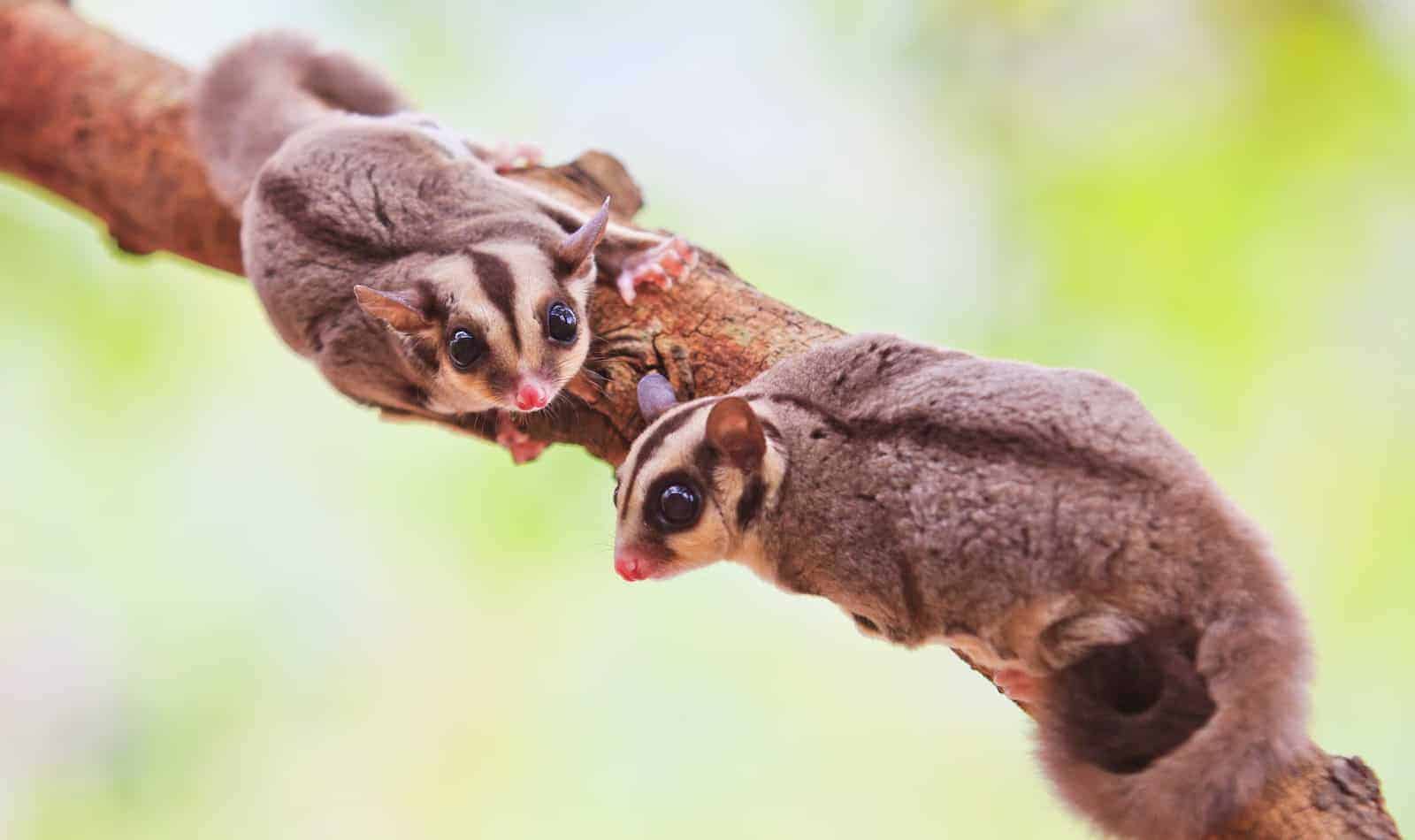
You can’t have just one sugar glider as a pet
Why?
Because sugar gliders are extremely social animals
In the wild, they live in groups, known as colonies, numbering up to 7 adults and their offspring.
Sugar gliders thrive when they have other gliders with them, so they should always be kept either in pairs or in small groups.
We’ve only just touched on all of the basic sugar glider care tips and necessities
We’ll deep-dive into more specific care tips over the next few weeks, but for now, you may want to pick up a guidebook like this one by Animal Planet.
Knowing the laws surrounding exotic pet ownership is crucial to ensure the safety and legality of both you and your pet. Stay informed and up-to-date by reading ‘legal exotic pets in California‘ and make a responsible choice for your next pet.
Do you have any other sugar glider care tips? Share below!
Deanna is a passionate animal lover. She is the mom of several guinea pigs and sugar gliders.
When she’s not writing, Deanna loves listening to country music, or watching Dancing With The Stars.
Read her : Latest Articles
FIND HER ON: FACEBOOK and LINKEDIN and


![Cute Sugar Glider Drinking From The Bottle [Must-Watch Video]](https://petsvills.com/wp-content/uploads/2022/09/Cute-Sugar-Glider-Drinking-From-The-Bottle-Must-Watch-Video-211x150.jpg)
